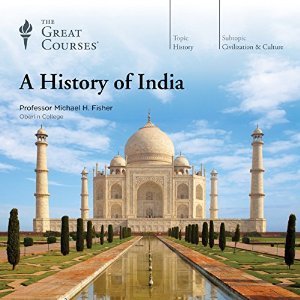Up Next: India and Nepal
For the past couple of years, as Alison and I have been planning our international travel, India has been in the conversation. The opportunity to see the Taj Mahal is part of the draw, but there is more to our desire to visit India than that iconic structure. India strikes us as a particularly fascinating place. While there are many reasons behind our decision to visit India it is hard to vocalize exactly why India. I recently saw a quote by Mark Twain that captures the mystique and allure of India:
“This is indeed India!
"…. The land of dreams and romance, of fabulous wealth and fabulous poverty, of splendor and rags, of palaces and hovels, of famine and pestilence, of genii and giants and Aladdin lamps, of tigers and elephants, the cobra and the jungle, the country of hundred nations and a hundred tongues, of a thousand religions and two million gods, the cradle of the human race, the birthplace of human speech, mother of history, grandmother of legend, great-grandmother of traditions, whose yesterday’s bear date with the modering antiquities for the rest of nations-the one sole country under the sun that is endowed with an imperishable interest for the alien prince and alien peasant, for lettered and ignorant, wise and fool, rich and poor, bond and free, the one land that all men desire to see, and having seen once, by even a glimpse, would not give that glimpse for the shows of all the rest of the world combined.”
India is a combination of so many different things. I am very excited to experience India and to learn more about the history of this massive civilization.
Nepal was, in all honesty, an afterthought. During the early planning stages of this trip, we were trying to convince Alison's parents to come. We were discussing potential itineraries and Blake pointed out that if he was going to fly all the way to that part of the world he would really like to see Mount Everest. That thought had not even crossed our minds. We went back to the drawing board and reconfigured our trip to include a few days in Kathmandu and an early morning flight around Mount Everest. Alison's parents decided not to join us on this trip, but we are glad that Blake expanded our horizons and convinced us to visit Nepal.
Books Read:
A History of India by Michael H. Fisher
The White Tiger by Aravind Adiga
Snakes and Ladders: Glimpses of Modern India by Gita Mehta
Life of Pi by Yann Martel
A Passage to India by E. M. Forster
2 States: The Story of My Marriage by Chetan Bhagat
Freedom at Midnight by Dominique Lapierre and Larry Collins
Kim by Rudyard Kipling
The Story of My Experiments with Truth by Mahatma Gandhi
Into Thin Air: A Personal Account of the Mt. Everest Disaster by Jon Krakauer
Bhagavad-gītā
Movies Watched:
Life of Pi
Slumdog Millionaire
Lion
The Hundred-Foot Journey
A Little Princess
Everest
Gandhi
Alison and I attended a presentation entitled Expedition Everest. This was sponsored by the Daybreak community. We got to listen to Daybreak resident, Ian Wade, recount his experience climbing Everest. It was a fun way to learn about this iconic mountain.
We also visited a local restaurant, Karuwaa Nepali & Indian Cuisine, where we tried some Nepali cuisine. We ate Momo which is a type of South Asian dumpling. We also tried Nepali fried rice which has more veggies than traditional fried rice and was made with an interesting curry/spicy sauce. We also ate some of our favorite Indian dishes. We are excited to see how food in India and Nepal compares to the food we find at Indian restaurants in Utah.
Here are a few personal observations from the books and movies above:
1. The size and diversity of India are truly mind-blowing. The country of India ranks as the 7th largest geographic area in the world. India is home to some of the wettest, coldest, and most humid places in the entire world. There are 1,000+ languages spoken in India. The big 6, Hindi, Bengali, Telugu, Marathi, Tamil, and Urdu, are all spoken by more than 50 million people. And at least 120 languages are spoken by more than 10,000 people. India does not have a national language because no one language encompasses the nation. Delhi is the second largest city in the world with ~22 million residents. The only city with more residents is Tokyo. India has two other cities in the top ten, ranked by number of residents. India also has great religious diversity. ~15% of the population of India is Muslim. This ~15% represents the second largest Muslim population in the world, behind only Indonesia. India is also the birthplace of four major religions- Hinduism, Sikhism, Jainism, and Buddhism. Zoroastrianism, Christianity, and Judaism also have a long history and significant populations within India. India is the world's largest democracy. They are also the nation that is the most actively involved in their elections, at around 70% participation. The Indian economy has been expanding faster than China’s. This has given rise to a new billionaire class in India. The country’s top 1% own nearly 60% of the wealth. Meanwhile, about 65 million of India’s citizens live in slums. India is a country of extreme diversity.
2. One of the topics I read about is marriage customs in India. Arranged marriages are, often, still the preferred path to matrimony. While it is quite popular there have been many modern updates to the process. For example, the internet has replaced matchmakers and potential spouses will often have a chance to meet and court (or object if necessary) before marriage. I, along with most Americans, had an automatic distaste for the idea of arranged marriage. I was surprised to learn that arranged marriages have a high probability of success. I don't know why that is, but fewer arranged marriages end in divorce. The divorce rate in India is one of the lowest in the world. Not only is their divorce rate impressive, but studies have found that Indian participants in arranged marriages generally report high levels of long-term satisfaction. While this method does not lend itself to the typical chick-flick formula it does appear to be effective. Learning more about this custom challenged my preconceptions about the "right" way to marry.
3. You cannot learn about the modern history of India without discussing the life of Mohandas Karamchand Gandhi. Gandhi led India to independence and inspired movements for civil rights and freedom across the world. He has been called the father of India. Gandhi is one of the most inspiring human beings I have ever learned about. He truly strove to live his beliefs 100%. He embodied the highest of human virtue - love, compassion, forgiveness, non-violence, and peace. He would fast and his fast could bring an empire to its knees. Despite this great power, he was a humble and unassuming man. He shared his profound wisdom in writing and speeches. I felt deeply inspired as I learned about Gandhi's life and philosophy. Here are a few pieces of wisdom from Gandhi:
Nonviolence is the first article of my faith. It is also the last article of my creed.
I came to the conclusion long ago . . . that all religions were true and also that all had some error in them, and whilst I hold by my own, I should hold others as dear as Hinduism. So we can only pray, if we are Hindus, not that a Christian should become a Hindu … But our innermost prayer should be a Hindu should be a better Hindu, a Muslim a better Muslim, a Christian a better Christian.
A good person will resist an evil system with his whole soul. Disobedience of the laws of an evil state is therefore a duty.
Religions are different roads converging on the same point. What does it matter that we take different roads so long as we reach the same goal? I believe that all religions of the world are true more or less. I say "more or less" because I believe that everything the human hand touches, because of the very fact that human beings are imperfect, becomes imperfect.
Victory attained by violence is tantamount to defeat, for it is momentary.
Seven social sins: politics without principles, wealth without work, pleasure without conscience, knowledge without character, commerce without morality, science without humanity, and worship without sacrifice.
The weak can never forgive. Forgiveness is the attribute of the strong.
Tolerance gives us spiritual insight, which is as far from fanaticism as the north pole is from the South. True knowledge of religion breaks down the barriers between faith and faith and gives rise to tolerance. Cultivation of tolerance for other faiths will impart to us a truer understanding of our own.
4. As I prepared for the Nepal portion of our trip I focused on media relating to Mount Everest. Mostly because it is somewhat hard to find compelling English media about other aspects of Nepal, but also because Everest is the driving factor behind our decision to visit Nepal. It is easy to be fascinated by this particular peak. It is not the most impressive-looking mountain or necessarily the most difficult mountain to climb, but it is fascinating because it is the biggest. When asked by The New York Times why he wanted to climb Everest, British mountaineer George Mallory, who died on the mountain during his third expedition there in 1924, famously answered, “Because it’s there. Everest is fascinating because it is so huge and daunting and deadly. Many of the stories about Mount Everest focus on harrowing tales of life and death, with a focus on death/disaster. The fact that there are people out there who are willing to risk their lives to stand for a moment on a small patch of earth excites the human imagination.



















Comments
Post a Comment